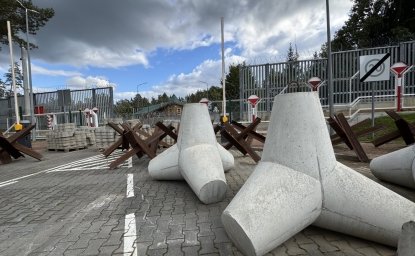The Ministry of Foreign Affairs of the Slovak Republic and the Slovak cultural organization Matica Slovenska have graciously presented the Woodrow Wilson Center with a bust of Alexander Dubcek to commemorate the extraordinary life of the former Czechoslovak reform leader and hero of the 1968 Prague Spring, and to thank the Center for its support to democracy activists who participated in the 1989 Velvet Revolution exactly one decade ago.
The bust will be unveiled in a ceremony to be held on November 8 from 4:30 to 6:00 p.m. in the sixth floor auditorium of the Woodrow Wilson Center. The prime ministers of the Czech and the Slovak Republics will be present.
The ceremony, part of an array of events being organized by the Czech and Slovak embassies to commemorate the tenth anniversary of the Velvet Revolution, will also feature a photo exhibit "The Spring of Hope 1968 & the Velvet Fall 1989."
More on Alexander Dubcek
The Slovak reformer and leader Alexander Dubcek (1921-1992) became the international symbol of new hope in Central and Eastern European countries behind the Iron Curtain until its fall in 1989.
Dubcek fought and was injured in the Slovak National Uprising against fascism in 1944.
In the spring of 1968, when claims for reforms in Czechoslovakia reached a critical point, Dubcek helped overthrow Stalinist leaders and was elected the first secretary of the Czechoslovak Communist Party. Known around the world for his effort to create a new socialism with a human face, he launched reforms referred to as Prague Spring: free speech, economic experimentation, open borders, and open debate over the country's political future.
These reforms ended with the Warsaw Pact invasion of August 1968 with his arrest and subsequent more than twenty years of persecution.
In the fall of 1989, Dubcek made an appearance at the Slovak National Uprising Square in Bratislava and at the Wenceslas Square in Prague and encouraged thousands of demonstrators to pursue their Velvet Revolution to end the dictatorship. Within weeks, he returned to public as chairman of the Federal Assembly of the Czech and Slovak Federative Republic. On September 1, 1992, the day when the new Constitution of the Slovak Republic was adopted, Dubcek was fatally injured in a car accident.
Explore More
Browse Insights & Analysis
On the Border of War

Update: Ambassador Reeker on President Trump’s UK State Visit

